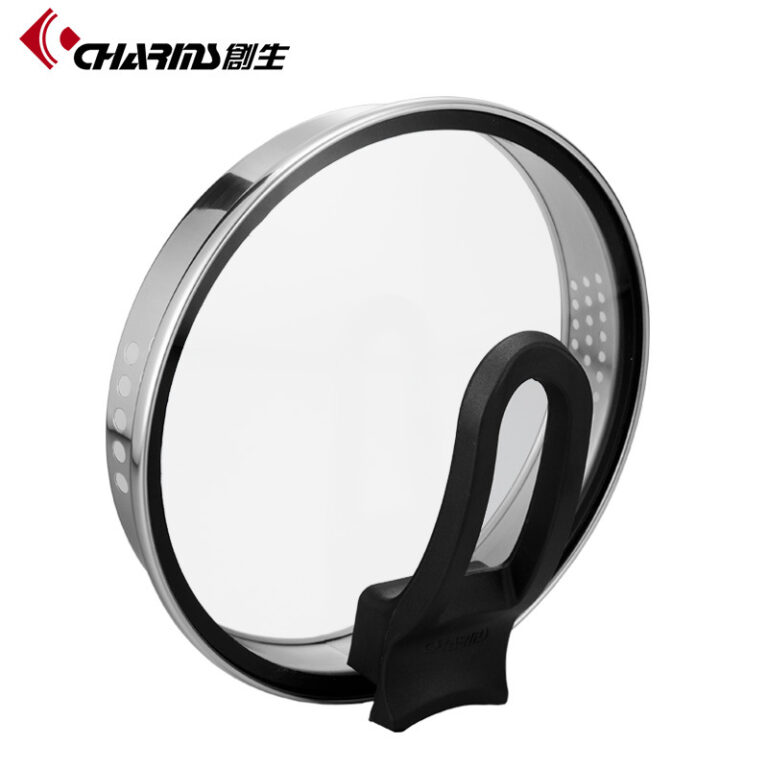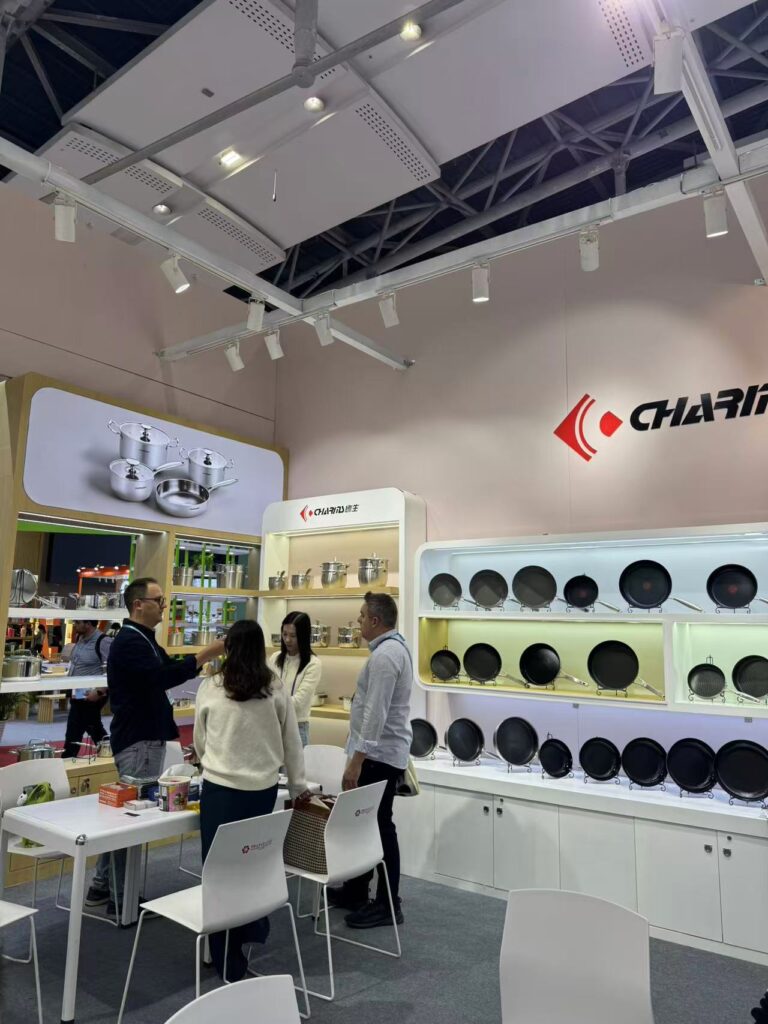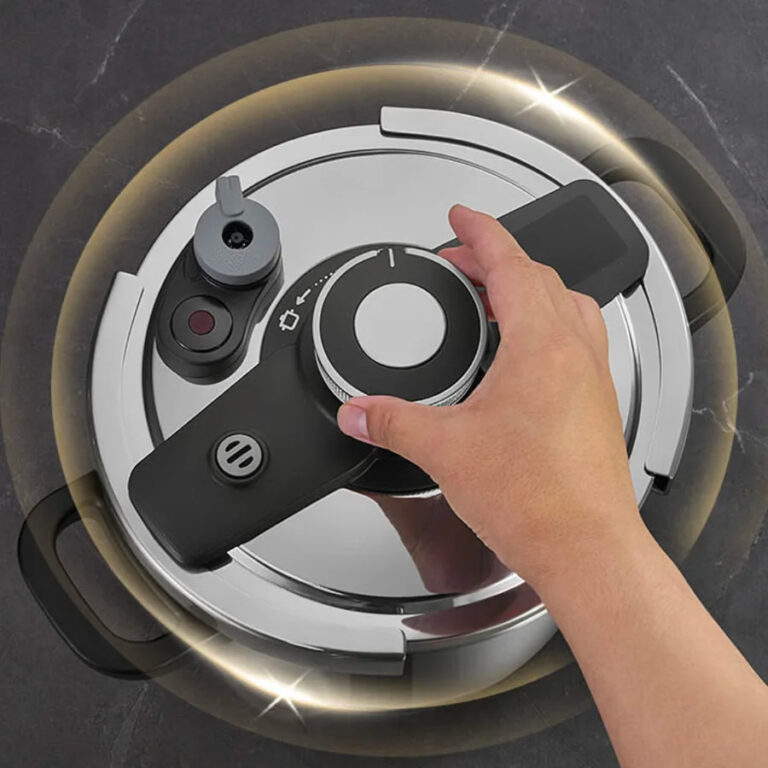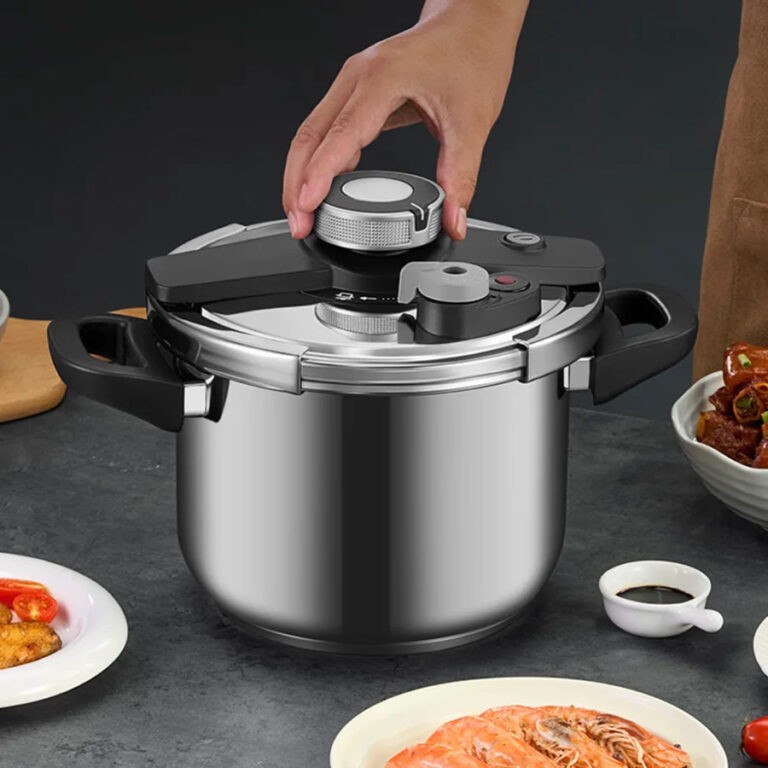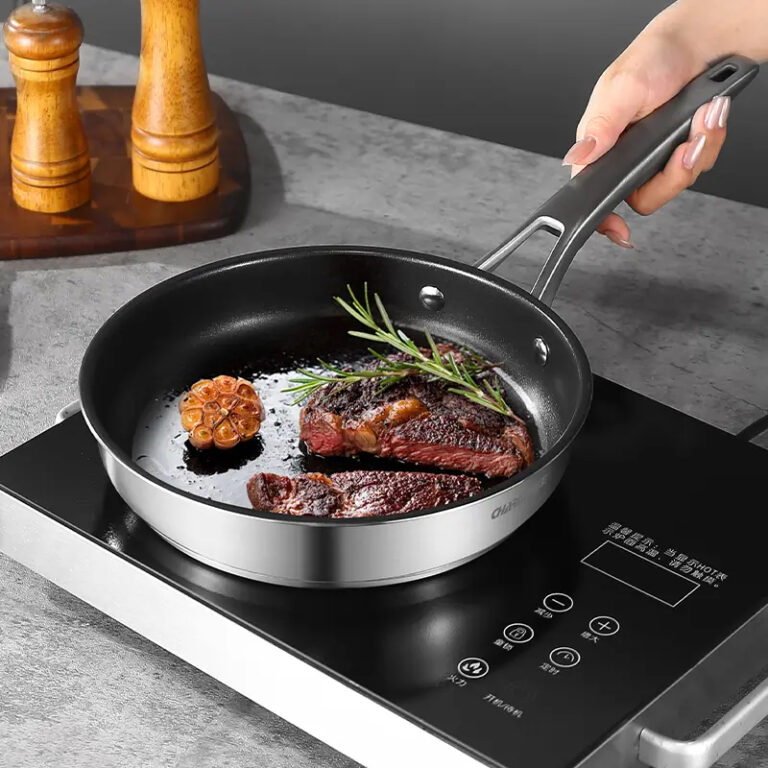Table of Contents
Toggle1. Introduction
Did you know? Today, in kitchens around the world, stainless steel cookware has long become one of the most reliable tools for preparing food. The main reason is that its polished luster is not merely aesthetically pleasing; It demonstrates durability, safety, and elasticity under the harsh conditions of daily cooking.
Whether you serve hundreds of meals every day in a busy restaurant or prepare family dinners in a home kitchen, cookware plays a crucial role in shaping the quality of each dish.
For this reason, many people have raised doubts: Will the use of stainless steel cookware pose any problems to our personal safety? In this article, let’s explore what stainless steel is, the available types, its comparison with other materials, and how proper maintenance affects its performance and lifespan. We can understand why stainless steel continues to stand out and become one of the most reliable and safest choices in modern cooking.
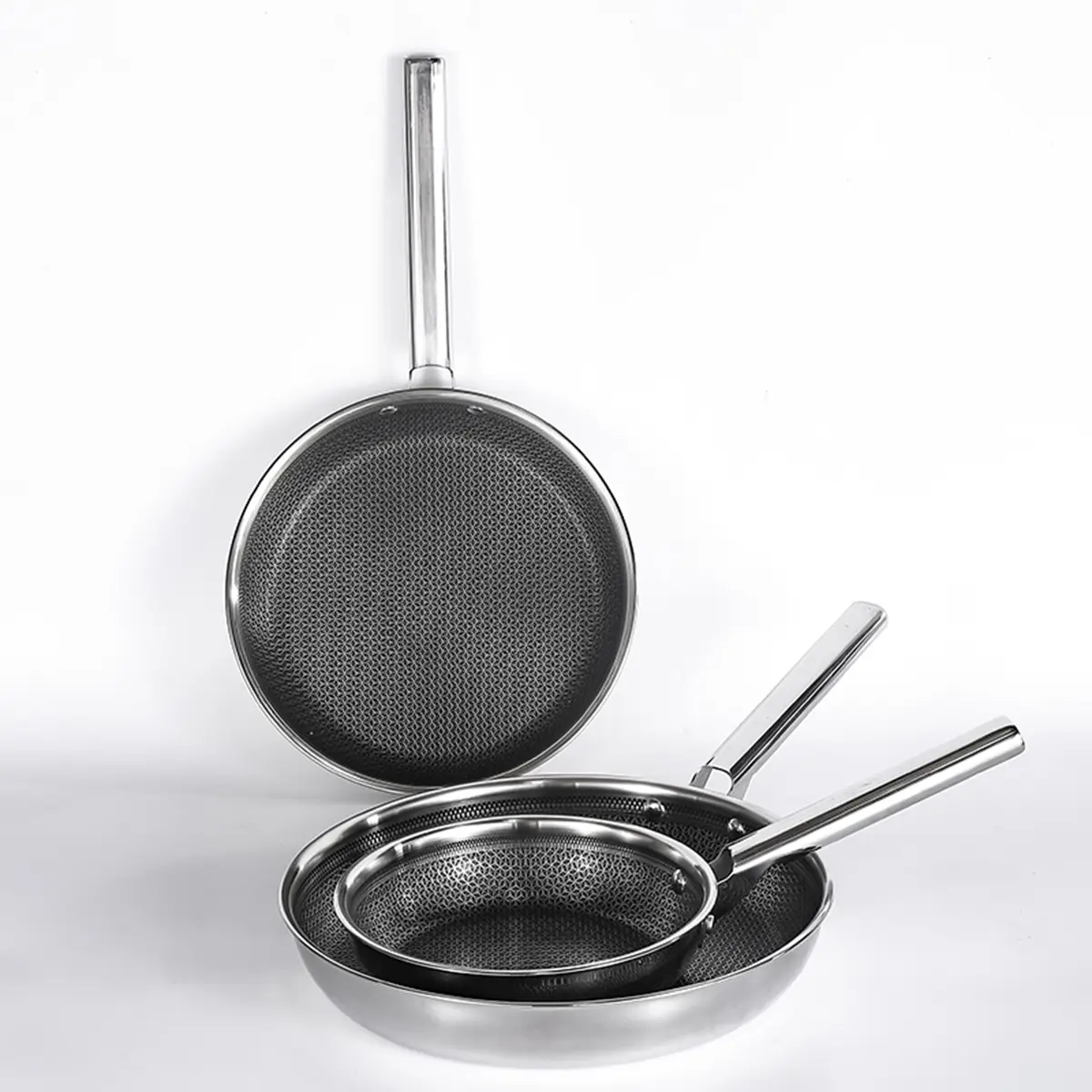
2. What is Stainless Steel Cookware?
Stainless steel cookware is mainly made of an alloy composed of iron and chromium, and contains different amounts of nickel, manganese, and sometimes molybdenum. Chromium forms a protective oxide layer on the surface, preventing rust and corrosion, while nickel enhances luster and resistance to acidic foods.
It is precisely because of the production of this material that it is not prone to reacting with food, can withstand high temperatures, and resist wear and tear over many years of use. These characteristics are crucial for kitchens that require continuous reliability. Unlike coated cookware, stainless steel does not peel or flake off. Unlike cast iron, it does not require continuous seasoning. Aluminium, does not react strongly with acidic components such as tomatoes or citrus fruits.
Stainless steel cookware is very safe in daily life. Please use it with confidence. Even after years of extensive use, it can still maintain its performance and appearance, making it a reliable companion for chefs around the world.
3. Different Stainless Steel Cookware
Not all stainless steel cookware is created equal. There are several grades and structures, each suitable for different kitchen needs:
- 304 Stainless Steel (18/10): This grade contains 18% chromium and 10% nickel. It offers excellent resistance to corrosion and is the most commonly used material in premium cookware.
- 316 Stainless Steel (18/10 + Molybdenum): Often referred to as “marine grade,” this type is extra resistant to salt and acidic environments. It is especially suitable for seafood-focused kitchens or frequent acidic cooking.
- Clad Stainless Steel (Multi-Layer Construction): This construction layers stainless steel with aluminum or copper. It delivers fast, even heat distribution and helps prevent hot spots, ensuring better cooking consistency.
- Magnetic Stainless Steel (18/0): Containing 18% chromium and no nickel, this type is less corrosion-resistant but fully compatible with induction cooktops. It is often chosen for cost-sensitive kitchen operations.

4.Stainless Steel vs. Other Materials (Comparison Table)
Not all stainless steel cookware is created equal. There are several grades and structures, each suitable for different kitchen needs:
| Feature | Stainless Steel | Cast Iron | Aluminum | Non-Stick |
|---|---|---|---|---|
| Durability | High | Very High | Medium | Low |
| Heat Conductivity | Medium (Clad High) | Medium | High | Medium |
| Maintenance | Low | High | Low | Medium |
| Reactivity with Food | Low | Low | High | Medium |
| Safety (Chemical Leaching) | Very Low | Low | Medium | Low-Medium |
| Cost (Commercial Grade) | Medium-High | Medium | Low | Medium |
| Lifespan (Heavy Use) | 10-20+ years | 20+ years | 5-10 years | 2-5 years |
5.Is Stainless Steel Cookware Truly Safe in Commercial Kitchens?
In my experience, the answer is a resounding yes—if certain precautions are observed. Stainless steel is chemically stable under high heat, meaning it won’t leach harmful metals into food under normal cooking conditions.
One case from a large catering company comes to mind. They transitioned their entire fleet of cookware from aluminum to 304 stainless steel over three years. During this period, they reported not only fewer complaints related to metallic taste but also reduced maintenance costs because stainless steel did not warp or corrode.
However, safety is not only about material composition. It also involves:
-
Proper cleaning methods: Avoid abrasive cleaners that can damage the surface.
-
Correct cooking techniques: Avoid prolonged exposure to high-acid foods in low-quality stainless steel.
-
Certified suppliers: Only sourcing from manufacturers with ISO certifications ensures the alloy composition is as specified.
When these measures are followed, stainless steel is arguably the safest and most reliable option for commercial kitchens.
6. Types of Stainless Steel Cookware Suitable for the Food Service Industry (Table)
| Cookware Type | Recommended Stainless Steel | Key Advantages for Restaurants |
|---|---|---|
| Stockpots | 304 / 316 | Large capacity, corrosion resistance |
| Fry Pans / Sauté Pans | 304 Clad | Even heating, long-lasting |
| Steamers | 304 / Clad | Energy-efficient, easy to clean |
| Mixing Bowls | 304 | Non-reactive, durable |
| Saucepans | 304 Clad | Reduces hot spots, ideal for sauces |
| Induction-Compatible Pans | 18/0 | Works on induction surfaces |
7.Lifespan and Maintenance Cost of Stainless Steel Cookware
One of the biggest advantages of stainless steel cookware is its long lifespan. High-quality stainless steel can last 10–20 years, even under heavy daily use.
Maintenance costs are also low:
-
Cleaning – Regular washing with mild detergent is enough.
-
Polishing – Occasional polishing restores shine.
-
Careful Handling – Avoid steel wool and extreme temperature changes.
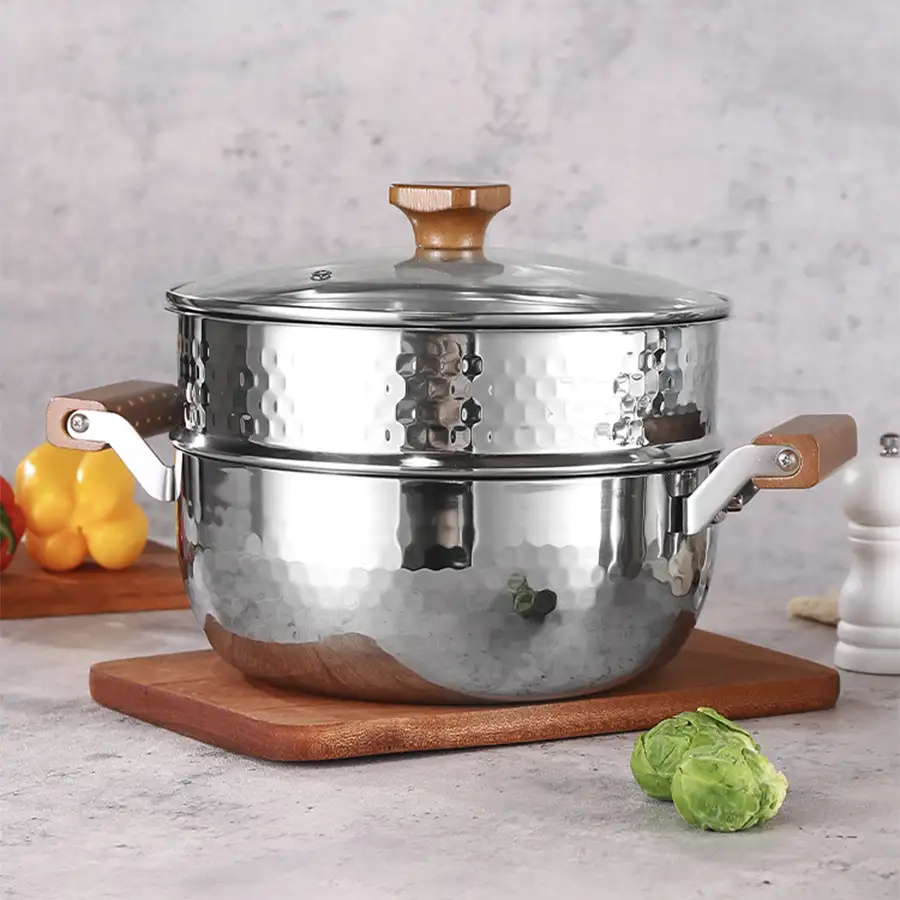
8.How to Choose Cost-Effective Stainless Steel Cookware
When selecting cookware, there are several important considerations:
-
Material Grade – 304 or 316 offers the best balance of safety and durability.
-
Construction – Multi-layered clad cookware provides superior heat control.
-
Supplier Reliability – Choose manufacturers with ISO certification and patents.
-
Warranty and Support – Quality cookware often comes with after-sales service.
For instance, Charms has worked with global partners to develop multi-layer steamers and energy-saving pressure cookers tailored to different market needs. This level of specialization ensures kitchens can achieve maximum efficiency without compromising on safety.
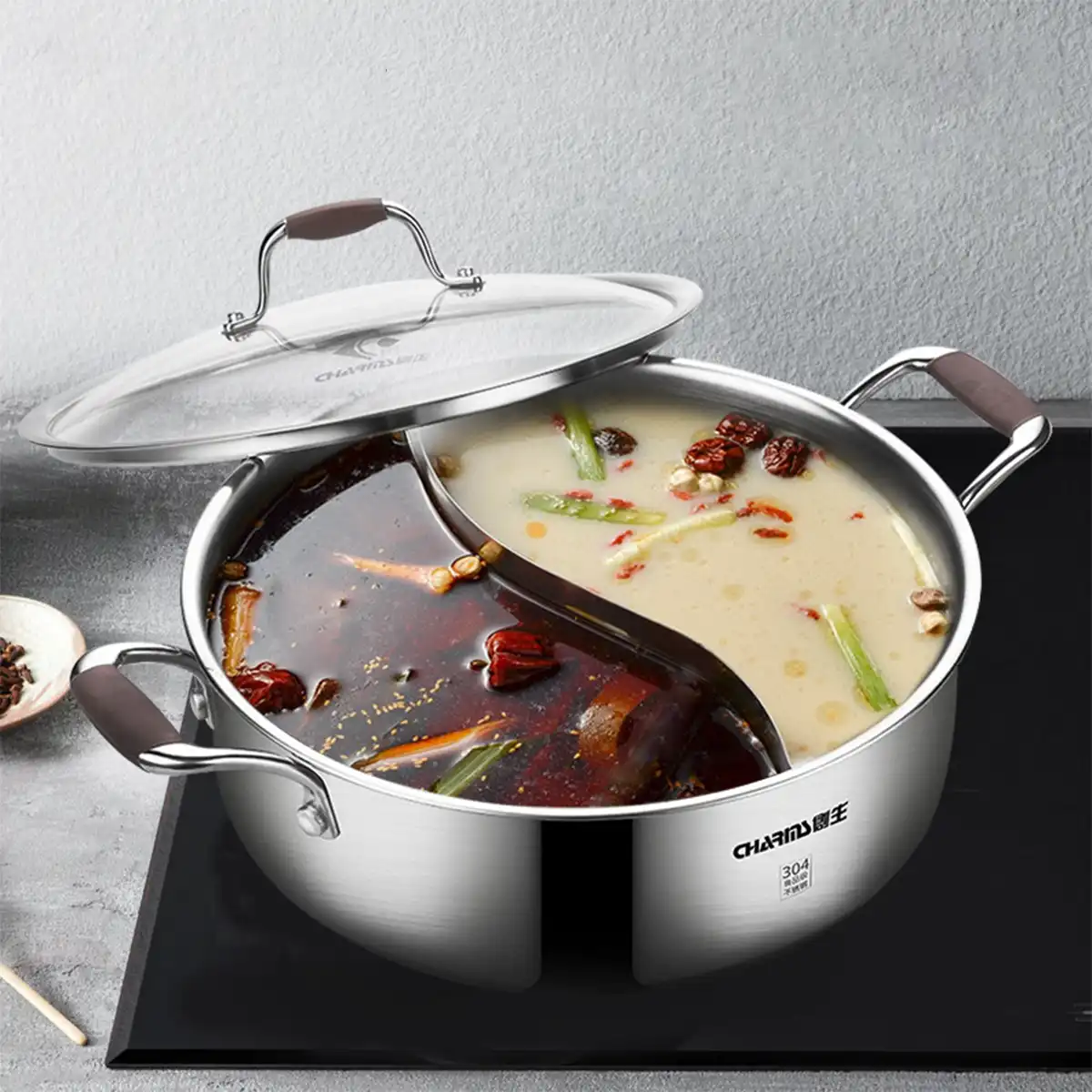
9. Conclusion
Stainless steel cookware is one of the safest and most dependable choices available today. With its resistance to corrosion, ability to withstand high heat, and non-reactive nature, it stands out as a long-term investment for kitchens of all sizes.
When choosing stainless steel, focus on high-quality grades like 304 or 316, ensure the cookware is sourced from reliable manufacturers, and follow proper maintenance practices. With these measures in place, stainless steel cookware provides not just safety but also efficiency, value, and lasting performance.
At Charms, nearly 30 years of expertise in stainless steel cookware manufacturing ensure that every product reflects superior craftsmanship, durability, and innovation. With ISO-certified quality standards, cutting-edge production technology, and strong R&D capabilities, we deliver solutions that meet the evolving needs of kitchens worldwide. From stockpots to multi-layer steamers, stainless steel cookware remains a symbol of trust, safety, and excellence.


